Sovietology and the End of the Cold War
The Cold War and its effects.
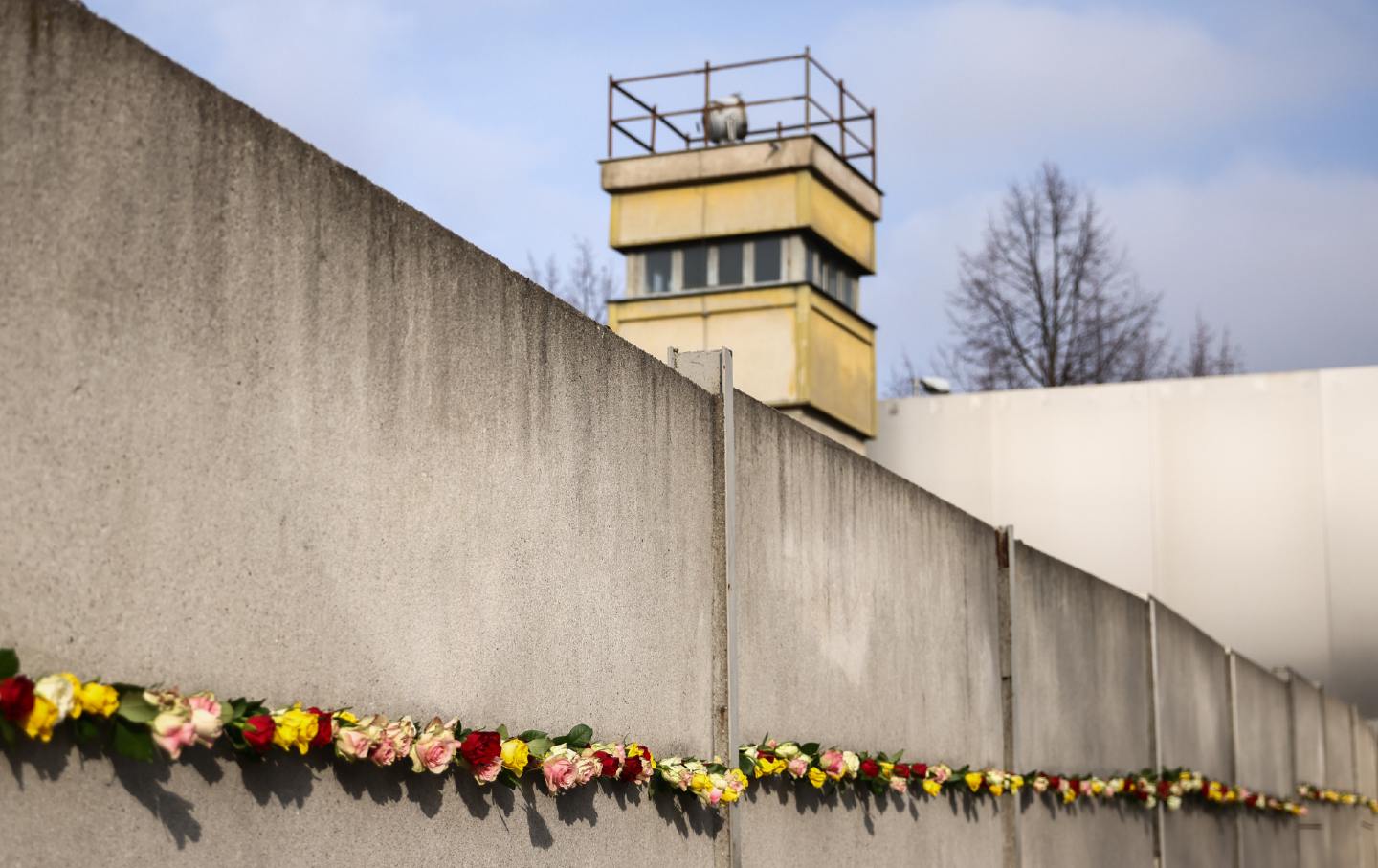
Remarks delivered at the Jordan Center Workshop, New York University, November 1, 2024.
My current reading of what Russia has become is based on my own experiences as an historian of the Soviet Union who first went to that fascinating country in October 1964, followed by a year as an exchange student, 1965–1966. Entering the field of Russian and Soviet studies as a graduate student more than a half century ago and later as a young professor in the Cold War years, I thought of our generation, in those years of the Vietnam War and the civil rights movement, as generally progressive and in relationship to the major adversary of the United States as basically détentists, that is, hoping for political and intellectual openings with the USSR and softening of the aggressive rhetoric and policies of both the East and the West. The 1960s and 1970s was a time when it was customary to speak of “going into” the USSR and “out of” the Soviet Union, as if into a prison, rather than simply “to” or “from” the Soviet Union. The dark images of what was called totalitarianism were still quite dominant in the profession and in the broader public.
The first thing one noticed when you came from the West and lived for a time in Soviet society, as those of us fortunate enough to participate in the cultural exchange programs were able to do for seven to 10 months, was that the life you were observing in the USSR, while restricted in all kinds of ways, and constantly experienced through myriad petty interferences by bureaucratic suspicions, regulations, red tape, and annoyances, did not resemble the T-model that still survived on the other side of the Iron Curtain. One came to realize from firsthand experience, even though it took policymakers much longer, that totalitarian theory was a deployed ideological construction of the world that denied its own ideological nature at a time when leading American thinkers proclaimed “the end of ideology.”
We young scholars enjoyed moments of intellectual excitement, as with the introduction of social history and the critique of the top-down exclusively political totalitarian-model, and some of us who proudly thought of ourselves as left, savored the victory when what was touted as “revisionism” based on social history appeared to have won the day, however briefly. We went through the Gorbachev years of hope that the openings had arrived, and the future appeared brighter than the détentists could have imagined. For some of us the tragic collapse of the Soviet Union that the peoples of the former empire experienced as social devastation, wars, chaos, and fragmentation shattered many of those hopes. Instead of an imagined new world, Russians and other Soviet peoples defaulted to the existing Western norms, neoliberalism in economics, bourgeois democracy in politics, and a headlong rush into the Western alliance if you could make it. A rhetorical and occasionally practiced internationalism and support for national liberation movements was supplanted by exclusivist ethnonationalism within the former Soviet republics, which led to tens of thousands of deaths in wars and ethnic conflicts in Azerbaijan, Armenia, Tajikistan, Georgia, and elsewhere, not to mention the later war between Russia and Ukraine as the USSR continued to unravel. Instead of a more democratic or social democratic Soviet Union, there was the triumph of market fundamentalism and the transition not to democracy but authoritarianism through the 1990s and into the next century.
The years since 1991 had both encouraging for historians: the profession rebounded, and new generations of scholars reaped the bountiful harvest of greater access to newly opened archives. Both pundits and the public thought that a new era of democratization and rapprochement between East and West had begun. But the rise of authoritarian regimes, misnamed as autocracies; the collapse once again of interconnectedness; the damning of Russia (very much deserved if you mean its leadership and supporters of the war but not of all the peoples of Russia, its culture, and history), the celebration of Ukraine’s resistance to invasion, and a war nekomu ne nuzhnaya (a war needed by no one)—but which involves forgetting or revising the complex history of Ukraine and its vicissitudinous relationship with Russia—left us with a desiccated view of a rich history. A radical reshaping of how we are to understand where we as scholars had been, have come from, and where we have arrived was now encapsulated in the accusatory concept of decolonization. Since February 2022, both Western scholars as well as official histories and textbooks in post-Soviet states reflect readings of both tsarist Russian and Soviet history once again as imperialist, colonial, and as negative influences on the non-Russian peoples, as had been the case in Cold War historiography. Some of us were decolonizing Russian and Soviet history 50 years ago by studying the Caucasus or Ukraine or Central Asia, but we were unaware that that was what we were doing. It was actually a professional disadvantage in those long gone days not to center your research on Russia, on the capitals. Studying the peripheries had a marginalizing effect, not to mention the time-consuming burden of learning other languages. I am not a native Armenian or Georgian or Turkish speaker. I had to learn all three.
History seeks to explain what happened and why in the past, and how that past structures the present and empowers—or more often limits—possible futures. But historians are aware that the way we understand history is shaped by the present, by the temporal and spatial contexts—material, structural, emotional, and discursive—of our own life and times, by our education and social positions. What was powerfully the case during the Cold War was that study of the Soviet Union by Americans was more often about indictment than about explanation. The way historians in the West conceived of the history of Russia and the Soviet Union, was never a neutral or value-free topic for scholars. The threat presented by the largest country on the globe, with its own ambitions, aspirations, and self-conceptions, has determined understandings of how Russia became what it has been and is today. Russia, like the Soviet Union, is so large and geopolitically located that by its very existence it presents a strategic dilemma for the West, no matter what regime type is in power.
When we look back today on the history of Russia or try to understand what it is doing at the present, we find that there is a new optic through which people and pundits are looking at the history of the former Soviet Union and present-day Russia. I call this optic “retrospective amnesia,” a tendency to have the present forget the past and see things through the way they ultimately worked out, at least, in the present. There is almost no imagining of the Soviet experiment without the lens of its collapse and disintegration, and today it is nearly impossible to speak of Russia without seeing its history through the horrors of the unprovoked, unnecessary war in Ukraine. The dreams and aspirations of the ordinary people who made the Russian Revolution 100 years ago, suffered through Stalinism, and essentially won the Second World War in Europe have largely been reduced to the figure of a dour former KGB officer. Russia, once again, as in Cold War days, is seen by many as a threat to Western civilization, to the stability of nations and the rules-based international order, and a scourge that seeks to undermine the fundamental values that we in the West must hold dear. Once again, as during the Cold War, it is said that the only thing Russians understand is power. Once again Russia has to be tamed, defeated, and undergo regime change. Policymakers neither consider the global context within which Russia operates nor deploy any strategic empathy to look at its weaknesses and vulnerabilities. Without excusing Russia’s rash and risky behavior, its regrettable turn toward xenophobic nationalism and anti-liberalism, some reflection of its sense of its own interests is a necessary and unavoidable first step to ending the war and reintegrating Russia into the world order.
Having spent a decade as a historian in a political science department, albeit it an unusual one, at the University of Chicago, I came to depend on clear definitions and more precise words so that I and my students and readers would know exactly what we were talking about. Political scientists, I learned, tend to fetishize definitions as they seek to be parsimonious, while historians tend to be more open to nuance, contradiction, anomalies, and usually possess a generous appreciation of complexity if not vagueness. Definitions, I believe, are useful heuristic tools, as are the ideal types implied in defining and comparing. They approximate what is found in the real world; definitions and ideal types can help our understanding even while they are always to be challenged by the messiness of what we find empirically. The words we have used to describe and explain the USSR, and by extension Russia today, powerfully determine how we explain its aims and actions.
Based on more than a half century of reading, writing, and research, I have become fearful of the way the history of a regime that no longer exists colors the way we look at Russia today. During the Cold War, the major paradigm through which the West viewed the USSR was totalitarianism, which posited unlimited state control over a repressed population, followed by a more moderate model known as modernization theory: the USSR would inevitably follow the Western trajectory into modernity, which meant industrialization, urbanization, literacy, science, mobility upward and downward, but not capitalism or democracy necessarily.
Soviet history was often oversimplified and reduced to stereotypes. The years of the Great Terror and Stalin’s ruthless rule were the emblematic image of what the Soviet Union had been. Western scholars of the Soviet Union tended to treat Soviet history deductively, that is as if the regime was the working out of a Marxist blueprint laid out in canonical texts. If one read Marx’s Capital or Lenin’s What is to be Done?, you could figure out what those nasty Bolsheviks were about. But in fact there was no blueprint for socialism. If one looks at the Soviet experiment as one not of building from those hallowed texts but as a series of improvisations to try to build a socialist modernity, you realize that the regime did not really know what it was doing. Its programs and policies were a series of experiments—state capitalism, War Communism, Stalinist despotism, and for the four post-Stalin decades a quite different vision of Soviet socialism.
The years 1953–1991, which made up more than half of Soviet history, were for much of the historical profession an afterthought, left largely to political scientists, until a younger generation began in the post-Soviet period, with the opening of the archives, to delve into the period of what has been called the “Thaw,” the years of “Stagnation,” and the tumultuous six years of the Gorbachev reforms, the end of the Soviet system, and the disintegration of the USSR. Those years provided a vision of Soviet socialism distinct from Stalinism and what went before: revolution, the civil war, and the foray into state capitalism in the 1920s known as the New Economic Policy. In this period kommunalki (communal apartments) were replaced by single-family apartments; austerity gave way to a search for comfort and prosperity; collectivism was challenged by individualism; the very definition of Soviet humanism underwent a change; the Gulag was essentially ended and state terror eliminated in favor of a regulated, relatively lawful police state; newspapers shifted from exhortatory “mass journalism” to a more empirical, supportive, style; the country opened up more to the West; foreign policy shifted from isolation and fierce antagonism to the West to relative openness and détente. The Soviet Union and the lives of its citizens became far more bourgeois than the generation of the early Bolsheviks could have imagined.
In the very last years of the Soviet Union scholars in the West began to think of the USSR as the last of the great empires. It had become impossible not to notice the mass movements of the non-Russian peoples. As a multinational empire it had succeeded in containing ethnic and social conflicts even after the elimination of Stalin’s mass terror. As an empire it had achieved its mission civilisatrice, that is, it had created a modern industrial state that no longer needed its vanguard elite, the Communist Party, to rule paternalistically over a literate, mobile people. The USSR had created nation-states within its imperial boundaries, while at the same time planting the seeds and structures that made conflict between the post-Soviet nation states more likely once the imperial hand had been lifted.
Ironically, paradoxically, in one sense the Soviet Union was far from a failure. It had achieved a large part of what it set out to do: create a modern urban, industrial, literate society. What it had not accomplished, however, was to realize its ultimate goal: to create a viable alternative to Western capitalist, bourgeois democratic society. The USSR never achieved socialism or what was originally envisioned as socialism. After all, Marxism was all about empowering ordinary people. In my utopian view, it is still worth thinking about what Marx was originally about. In a review of a book on the literary style of Karl Marx, Irish critic Terry Eagleton writes: “You must release your powers reciprocally, through the equal self-expression of others. Or, as the Communist Manifesto puts it, the free development of each is the precondition for the free development of all.” Or, in a less exalted phrasing, maybe it is time for us to move on to an economy of opportunity.… At least as a first step.
Disobey authoritarians, support The Nation
Over the past year you’ve read Nation writers like Elie Mystal, Kaveh Akbar, John Nichols, Joan Walsh, Bryce Covert, Dave Zirin, Jeet Heer, Michael T. Klare, Katha Pollitt, Amy Littlefield, Gregg Gonsalves, and Sasha Abramsky take on the Trump family’s corruption, set the record straight about Robert F. Kennedy Jr.’s catastrophic Make America Healthy Again movement, survey the fallout and human cost of the DOGE wrecking ball, anticipate the Supreme Court’s dangerous antidemocratic rulings, and amplify successful tactics of resistance on the streets and in Congress.
We publish these stories because when members of our communities are being abducted, household debt is climbing, and AI data centers are causing water and electricity shortages, we have a duty as journalists to do all we can to inform the public.
In 2026, our aim is to do more than ever before—but we need your support to make that happen.
Through December 31, a generous donor will match all donations up to $75,000. That means that your contribution will be doubled, dollar for dollar. If we hit the full match, we’ll be starting 2026 with $150,000 to invest in the stories that impact real people’s lives—the kinds of stories that billionaire-owned, corporate-backed outlets aren’t covering.
With your support, our team will publish major stories that the president and his allies won’t want you to read. We’ll cover the emerging military-tech industrial complex and matters of war, peace, and surveillance, as well as the affordability crisis, hunger, housing, healthcare, the environment, attacks on reproductive rights, and much more. At the same time, we’ll imagine alternatives to Trumpian rule and uplift efforts to create a better world, here and now.
While your gift has twice the impact, I’m asking you to support The Nation with a donation today. You’ll empower the journalists, editors, and fact-checkers best equipped to hold this authoritarian administration to account.
I hope you won’t miss this moment—donate to The Nation today.
Onward,
Katrina vanden Heuvel
Editor and publisher, The Nation
More from The Nation
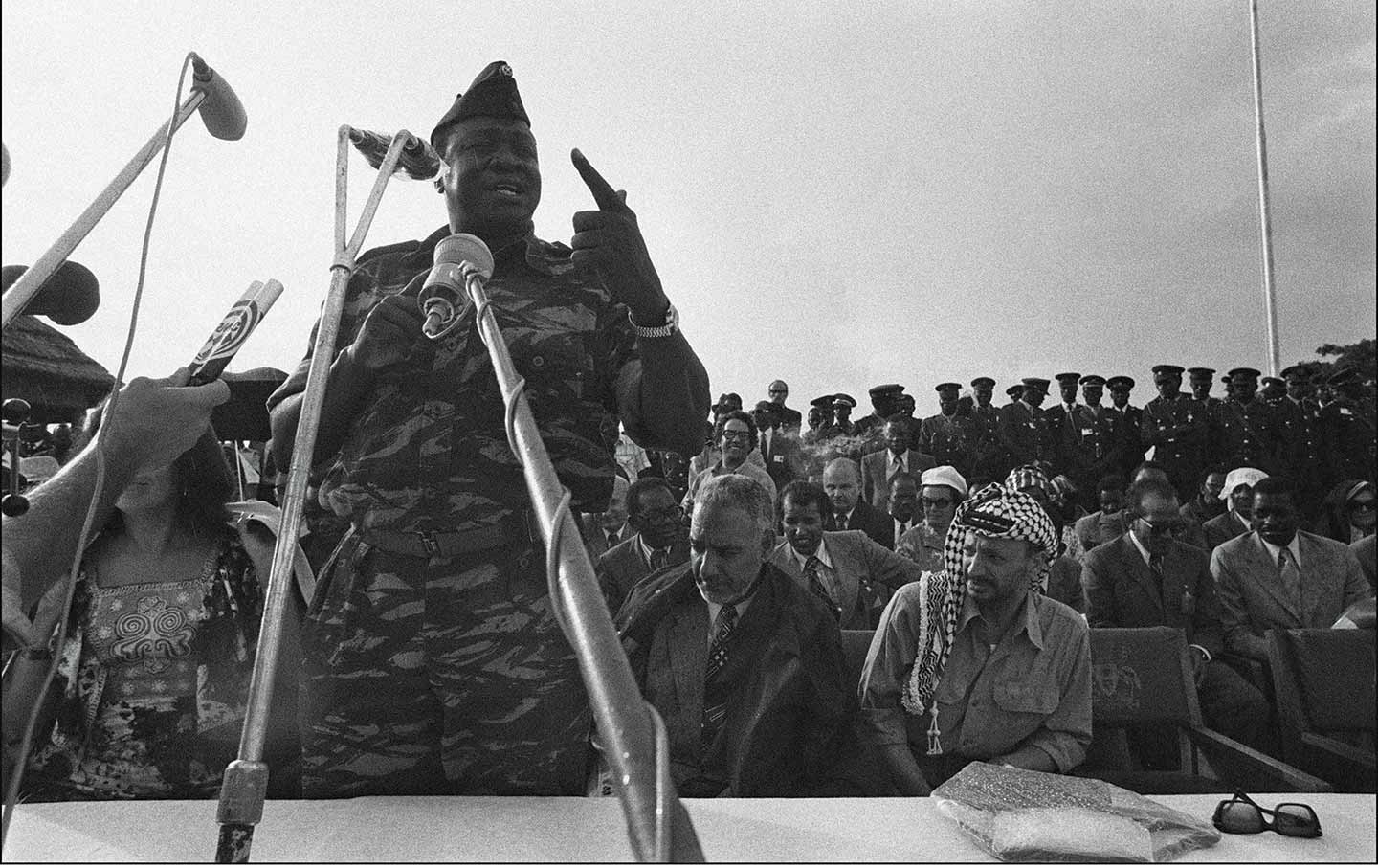
Mahmood Mamdani’s Uganda Mahmood Mamdani’s Uganda
In his new book Slow Poison, the accomplished anthropologist revisits the Idi Amin and Yoweri Museveni years.

The US Is Looking More Like Putin’s Russia Every Day The US Is Looking More Like Putin’s Russia Every Day
We may already be on a superhighway to the sort of class- and race-stratified autocracy that it took Russia so many years to become after the Soviet Union collapsed.

Israel Wants to Destroy My Family's Way of Life. We'll Never Give In. Israel Wants to Destroy My Family's Way of Life. We'll Never Give In.
My family's olive trees have stood in Gaza for decades. Despite genocide, drought, pollution, toxic mines, uprooting, bulldozing, and burning, they're still here—and so are we.
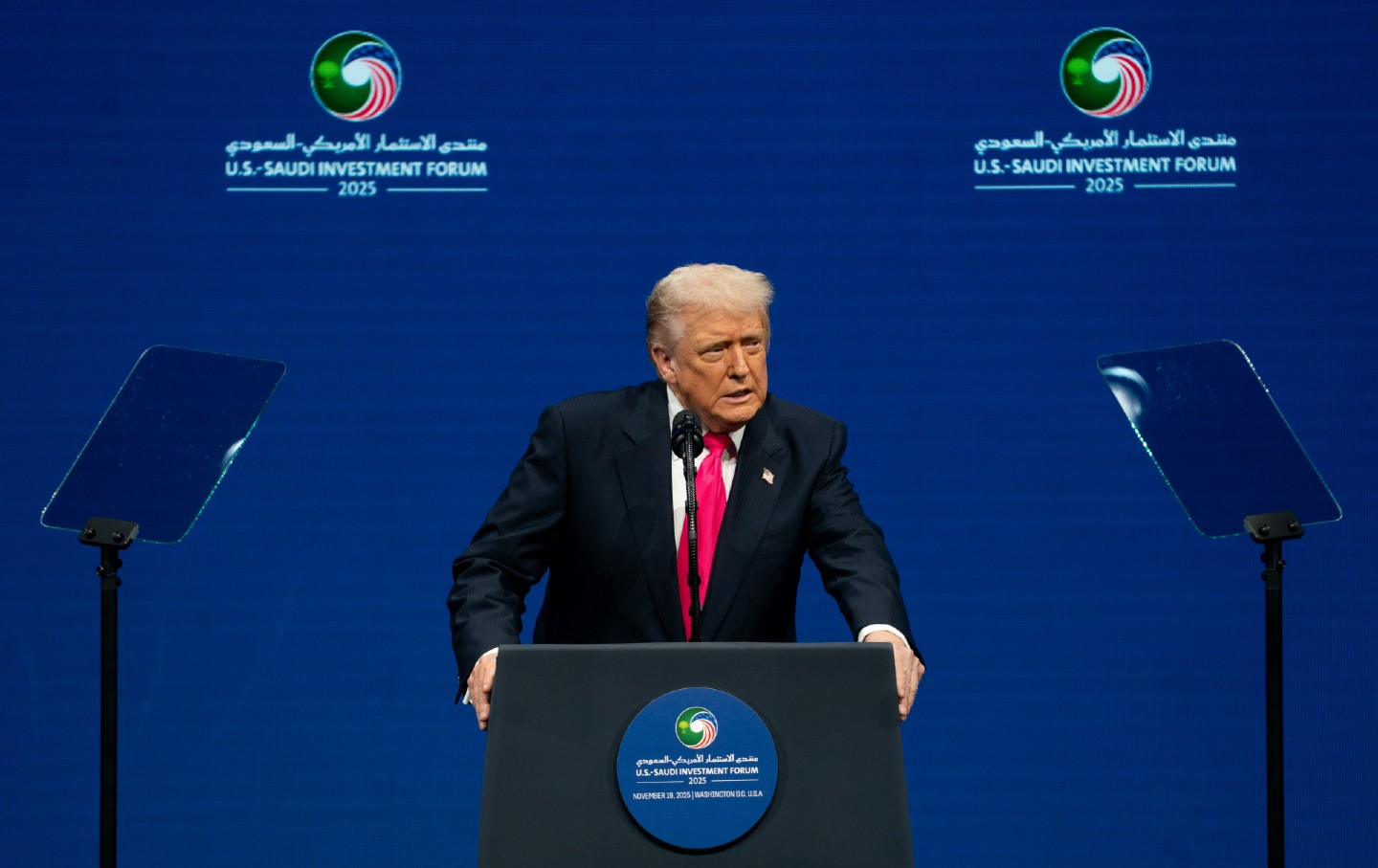
Trump’s National Security Strategy and the Big Con Trump’s National Security Strategy and the Big Con
Sense, nonsense, and lunacy.
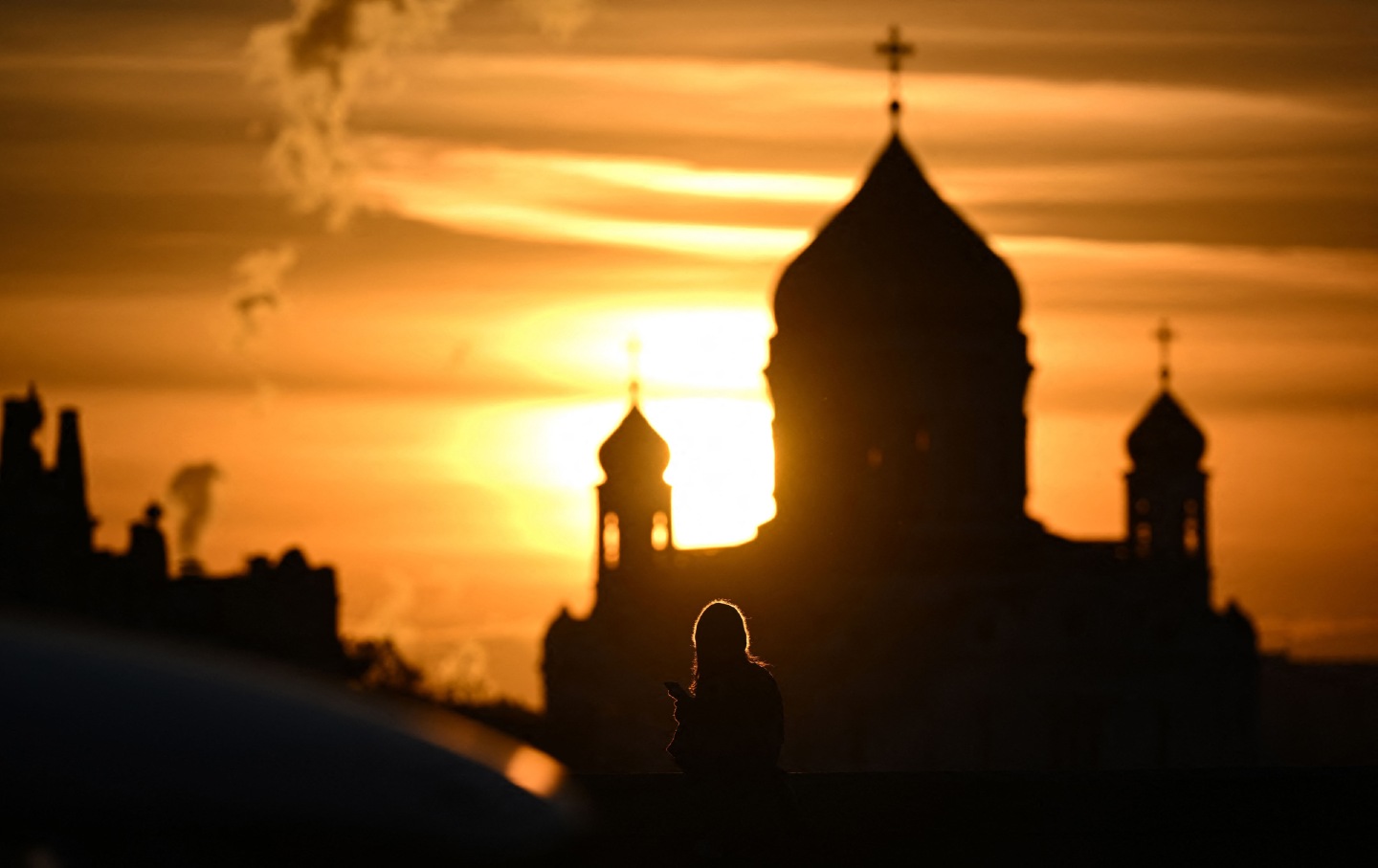
Does Russian Feminism Have a Future? Does Russian Feminism Have a Future?
A Russian feminist reflects on Julia Ioffe’s history of modern Russia.
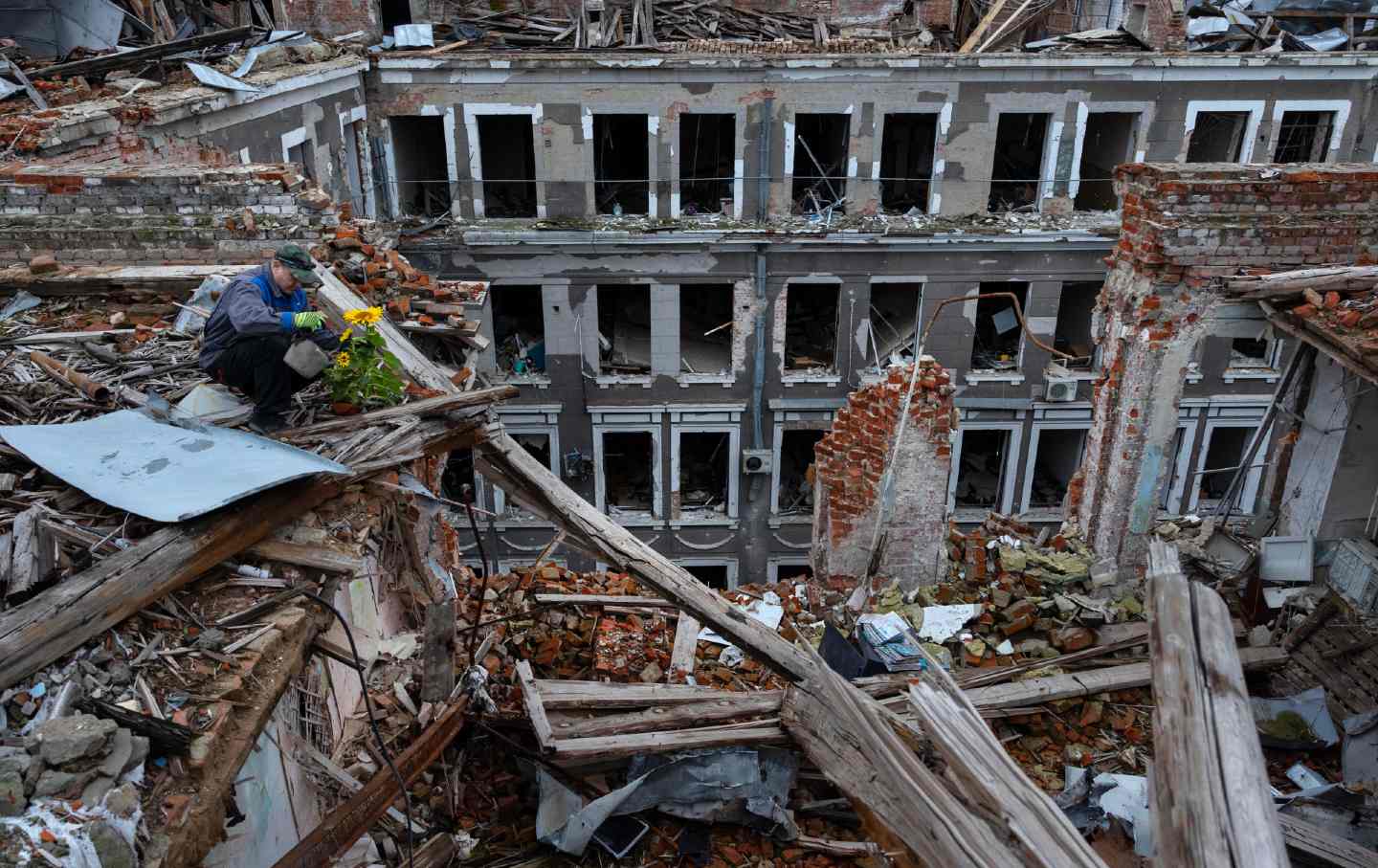
Ukraine’s War on Its Unions Ukraine’s War on Its Unions
Since the start of the war, the Ukrainian government has been cracking down harder on unions and workers’ rights. But slowly, the public mood is shifting.


